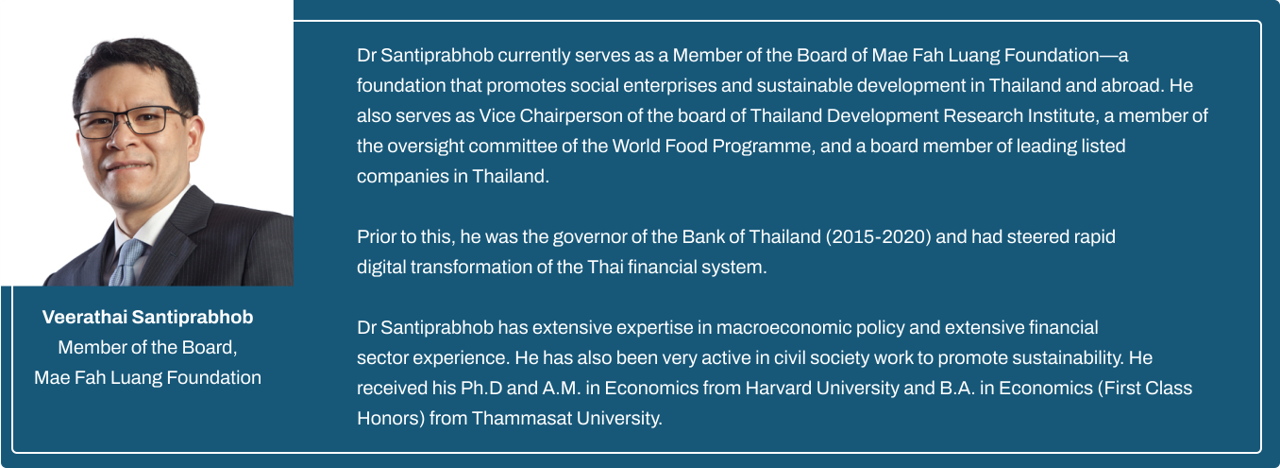That climate change (E) and income inequality (S) are the two biggest existential threats of the 21st century is well understood. The call for urgent action is growing. However, some of today’s most popular solutions like regulation, measurement, reporting, incentives, and cheaper capital are not enough to save planet Earth and humanity. Specifically, it might be time to upgrade the ESG framework to ESL.
First, a point of clarification. Rather than looking at ESG as a narrow tool to evaluate investment decisions, we see it as a broader framework to drive responsible and proactive business behaviour towards addressing environmental and societal challenges. We see E and S as existential challenges, and G as one of the mechanisms to address them.
ESG is inadequate because most tools use Governance approaches that fail to galvanise enough positive action. What gets measured and rewarded gets done, they say. Does it? Let us first look at the tools to identify problems, then propose a better solution.
Regulation
Almost every country is tightening regulation to drive responsible environmental and societal behaviour. If the stick is not big enough, no one will listen. While there is merit in the argument, it falls short for three reasons:
- Regulation sets the minimum standard for good behavior – If you break the rules, you will be punished. While needed, this is insufficient because addressing the existential threats requires deeply inspired action at the highest level. We need proactive innovative solutions to today’s environmental and societal challenges. Not breaking the law, or doing just enough to comply with the law, is simply not enough.
- Regulation may preserve present value, but it does not enhance future value. It does not create the brave new future we need. In some cases, it also kills innovation and judgment. In today’s dynamic environment, rules get outdated before the ink dries on them. If an organisation overemphasises rules and regulations, employees blindly apply rules rather than values-based judgment when it is required. A few years ago, when United Airlines employees were handling an over-booked flight, they requested passengers to voluntarily give up a seat for a reward of $400. When no one volunteered, they applied the rule of randomly picking a passenger and asking him to leave. When he refused, he was violently dragged off the plane. Instead of using company values to find a better solution, the employees blindly followed the rule. Perhaps they felt more compelled to apply the rule, and less empowered to use judgment based on company values?
- Regulation is usually reactive. New laws are framed when something goes wrong – Let us create regulation so that such irresponsible behaviour never happens again. Much damage already takes place before new rules are put in place. The 2008 financial crisis is a great example. The much-needed new rules that followed did not help the millions who had already suffered because of the massive, misguided sub-prime mortgage lending.
Measurement, incentives and rewards
Of late, several measurement and reporting frameworks have mushroomed to drive responsible behaviour. Firstly, the landscape is confusing – which framework should we use – and secondly, it has given rise to rampant misuse.
Maybe what gets measured does get done, but the question is what is measured and how. Reports of greenwashing make regular headlines in the business press these days. Is it because we are overusing the measurement and reporting tool? Or is it because the measures, while well intentioned, are ill-defined to the extent that they drive undesired behaviour? In his academy classic article “On the Folly of Rewarding A While Hoping for B,” Steve Kerr discussed many illustrations to prove that both are true. Here are a few in summary:
Universities
Society hopes professors teach as much as possible to the best of their abilities, but they are rewarded almost exclusively for their research and publications. So, professors need to choose between teaching and research activities while allocating time. There are hardly any rewards for outstanding teaching. However, rewards abound for research and publications.
Sports
It is well known that a key to winning in basketball is effective passing. However, a college player who passes the ball instead of shooting accomplishes less impressive individual shooting scores and is almost never drafted by the pros. We hope for teamwork and passing, but we reward individual performance.
Business
In one health insurance company, a measurement system was established in claims processing. Two specific measures were used: 1) the number of complaints, and 2) the speed of processing. A claims processor who had fewer complaints and processed more claims per day was rewarded more than others. New hires quickly learned that overpayment was a better strategy than opting for a deeper investigation of doubtful cases, and speed was of the essence. They followed the mantra: when in doubt, pay it out; obviously causing avoidable overpayment. While hoping for superior customer service and speed, the company inadvertently ended up rewarding undesirable behaviour. The 2008 sub-prime mortgage crisis was also caused due to a similarly fouled-up measurement, incentive and reward system.
The G problem
Two big issues make the ESG framework ineffective and inadequate.
- Much of the framework relies on carrots and sticks (measurement, reporting, and incentives), and is therefore subject to the anomalies discussed above. While many organisations’ sustainability efforts are genuine, there are plenty of examples of measuring and reporting to look good. The focus is more on form than substance. Perhaps it is true that what gets measured gets done, but maybe it is also true that when measurement and reporting is overemphasised, it is often misused. One needs just to google “misuse of ESG” or “greenwashing” to find ample proof of the malpractice.
- G is mostly about compliance with rules and policies. As stated earlier, regulatory compliance may prevent losses and preserve value, but it does not create future value. To secure the future of the planet and humanity, we need to create innovative business models that drive shareholder returns by addressing the very challenges that threaten us. Rules are followed, innovation is led. We need to abide by the rule of law, but to effectively address E and S challenges, we need a leadership model that moves above and beyond compliance. Some may argue that governance is more than compliance. It includes direction setting and taking care of multiple stakeholders. While this might be true in theory, in practice it tends to be more about compliance and financial discipline. I have asked over one hundred boards and thousands of individual directors how they spend their time. Specifically, I ask them: Imagine you had one hundred units of time as a board member each year, and you could spend them only on the following two items, how many units do you spend on each:
a) Framing and enforcing rules and policies
b) Ensuring all employees live the company’s stated values
Almost always, the answer I get is 80: 20 i.e., 80% of the time is spent on framing and enforcing rules and policies, and 20% – if at all – on ensuring the culture is aligned with stated values.
Another question I often ask is this: If you had one hundred units of time as a board member, and you could spend them only on the following two items, how many units do you spend on each:
a) Risk management and value preservation
b) Strategy and value creation
Again, the answer I usually get is 80:20.
For two of the most important aspects of long-term performance –culture and strategy – boards have little to no time.
To effectively tackle environmental and societal challenges, we need to avoid the folly of rewarding A while hoping for B. Rather than relying solely on carrots and sticks, we need more powerful (intrinsic) motivation to create ownership to fight the threats with proactive innovation. We need Steward Leadership, which is the genuine desire and persistence to create a collective better future.
From ESG to ESL
So, what is ESL? The L stands for Leadership, specifically Steward Leadership. Boards and senior management teams that take a Steward Leadership approach build an organisational culture based on values like interdependence, long-term view, ownership mentality and creative resilience. Based on such values, they pursue a purpose that aims to create value by integrating the needs of multiple stakeholders, society, and the environment. In other words, they choose to do well by doing good. Leaders at such companies see themselves as stewards of the planet and society. They proactively create business models that address E and S challenges and run every decision through the lens of their values and purpose.
In short, governance largely uses the power of rules and regulations to drive positive action. This provides a baseline for good behaviour. Steward Leadership uses values and purpose. Be it in business or government, Steward Leadership is a more powerful and resilient motivator. Nelson Mandela survived 27 years in prison without losing hope because he was driven by his genuine desire and persistence to create a rainbow nation – his version of a collective better future for South Africa. Similarly, Howard Schultz did not give up even after 230 rejections in 1897 when he was trying to raise $3.8 million to buy the then-tiny Starbucks company. He was driven by his purpose to “create a company my father never had the chance to work for” – a company in which all employees would be treated with respect and dignity.
Fourth-generation family member Lothar von Faber (1817-1896) was well ahead of his time in putting Steward Leadership into practice at Faber-Castell. He implemented an employee well-being framework by providing health insurance and housing benefits to his staff 50 years before they became the law in Germany. A church and kindergarten were built within employee communities, instilling a sense of belonging and ownership that remains alive today. His leadership showed that Faber-Castell’s ethos, “if you treat your workers well, they will treat you well, create good products and be loyal to your company” was present even as early as the 1800s. This corporate strategy centred around sustainability has paid off. The company has remained profitable throughout its long history and even achieved a 10% improvement in its ESG rating in 2021.
In conclusion, the purpose of this article is not to disregard the rule of law or to downplay the importance of governance. Instead, it is to urge business leaders to go well beyond regulatory compliance, measurement, reporting and incentives to create a culture of genuine Steward Leadership. It is to encourage boards and investors to evaluate ESL factors rather than just ESG.
This article was first published on Forbes (17 Oct 2022).
Posted 02/02/2023

















4 months ago
🥰🥰🥰